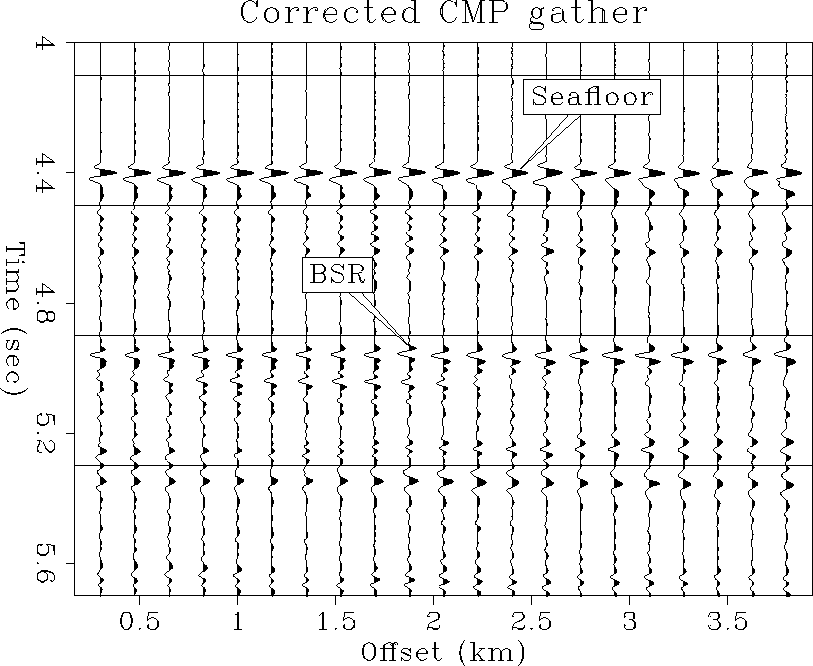|
gather-ann
Figure 1 Final CMP gather after migration and all calibrations were applied to the data. The three main events are the seafloor, the BSR and the flat reflector underneath. |  |
The data were processed to preserve true amplitude information. In the first step, they were corrected for time-varying spherical divergence correction. Then I performed a single-trace source wavelet deconvolution in order to regularize the source wavelet with offset. The deconvolved data was then bandpass filtered to the original data bandwidth to remove spurious deconvolutional high-frequency noise. Using NMO stacking analysis, I obtained a 2-D velocity field for the data by picking velocities every 25th supergather, which consisted of 10 averaged adjacent gathers. A smoothed version was then used as input into a true amplitude prestack migration Lumley and Beydoun (1993). A residual moveout correction was subsequently applied to the migrated, NMO corrected gathers to correct events that could not be completely flattened using the stacking velocities. Since it is essential that the reflector moveout is very flat for AVO analysis, an additional static shift was applied to correct for some small, non-hyperbolic offset-dependent residual moveout in the CMP gathers after migration.
In order to recover the true amplitude information in the data, I calibrated the data amplitudes using the seafloor as a reference reflection. First I normalized each CMP gather by the near-offset seafloor amplitude. I then calibrated the amplitudes assuming a functional form of the seafloor AVO response. Results from drilling in the area suggest that the P-wave velocity increases from about 1.45 to 1.5 km/s and the density from 1.0 g/ccm to approximately 1.3-1.4 g/ccm Ecker (1997); Matsumoto et al. (1996). The implementation of a dipole shear wave tool during the deeper drilling in the sediment implies very low S-wave velocities in the area caused by highly unconsolidated, shaly sediments. Based on this information and following Hamilton Hamilton (1976), I assumed an S-wave velocity of about 0.25 km/s for the shallow sediments. Using these elastic properties, I determined an angle-dependent correction function for the data, which forced the seafloor AVO to decrease slightly (nearly constant) with increasing offset. A migrated and amplitude corrected CMP gather can be seen in Figure 1.
|
gather-ann
Figure 1 Final CMP gather after migration and all calibrations were applied to the data. The three main events are the seafloor, the BSR and the flat reflector underneath. |  |